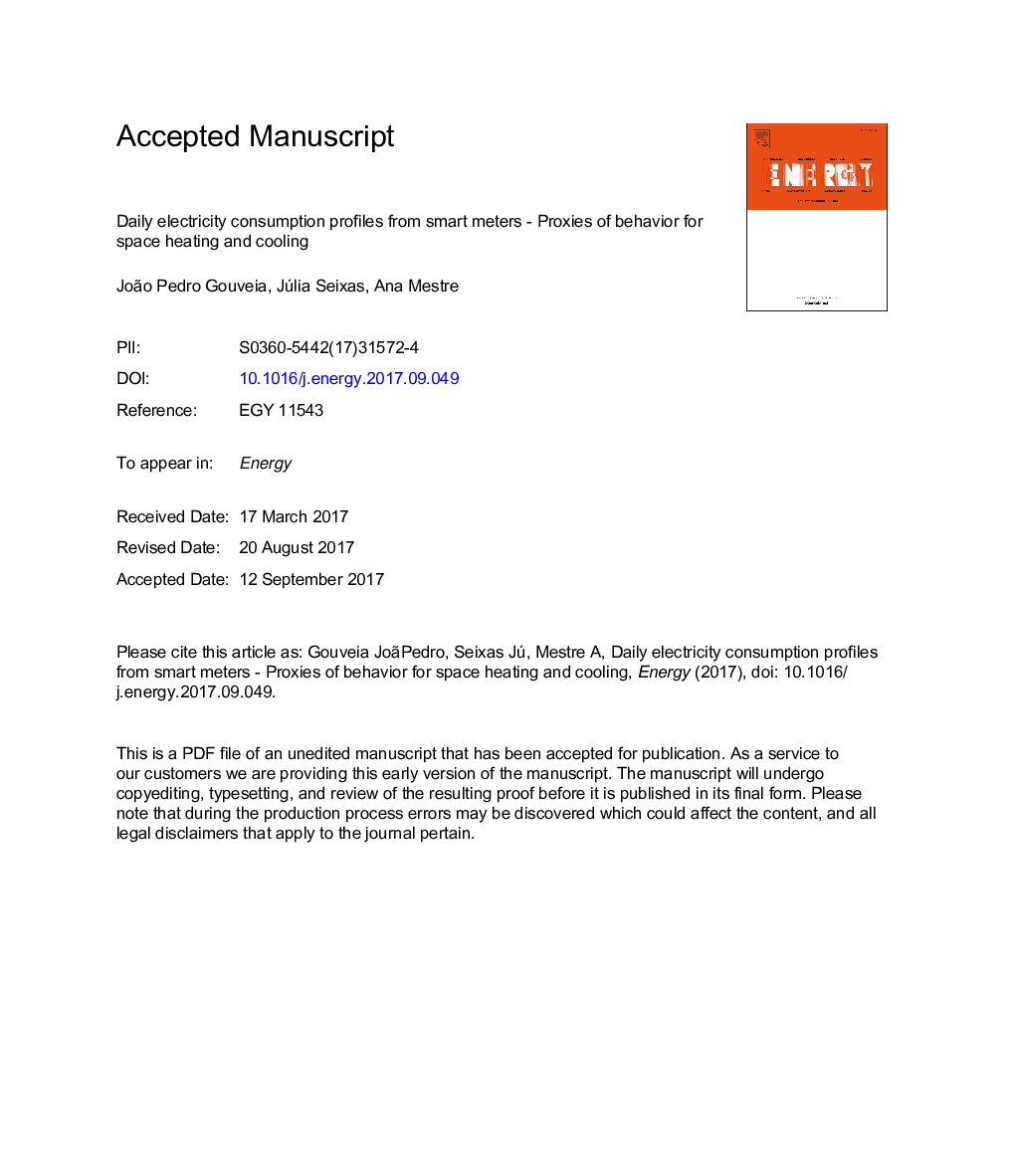| Article ID | Journal | Published Year | Pages | File Type |
|---|---|---|---|---|
| 5475378 | Energy | 2017 | 41 Pages |
Abstract
Daily electricity consumption profiles from smart meters are explored as proxies of active behavior regarding space heating and cooling. The influence of the environment air temperature (multiple maximum and minimum daily thresholds) on electricity consumption was explored for a final sample of 19 households located in southwestern Europe (characterized by hot, dry summers and cool, wet winters), taking the full year of 2014. Statistical analysis of the deviations from hourly average electricity consumptions for each temperature thresholds was performed for each household. Firstly, these deviations could act as proxies highlighting possible lack of thermal comfort on space cooling, and partially on space heating, supported by door-to-door survey data, on socio-economic details of occupants, buildings bearing structure and equipment's ownership and use. Secondly, meaningful differences of consumers' behavior on electricity consumption pattern were identified as a response for space heating and cooling to the environment air temperatures thresholds. Additionally, statistical clusters of active and non-active behavior groups of households were assessed, showing the electricity use for space heating. This paper illustrates the importance of the widespread use of smart-meters data on the increasingly electrified buildings sector, to understand whether and how thermal comfort could be achieved through active climatization behavior of its occupants. This is particularly important in regions where automatic HVAC systems are almost absent.
Related Topics
Physical Sciences and Engineering
Energy
Energy (General)
Authors
João Pedro Gouveia, Júlia Seixas, Ana Mestre,
